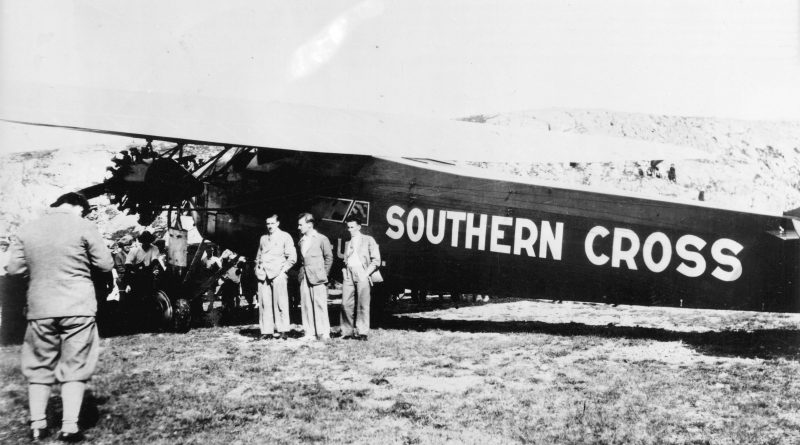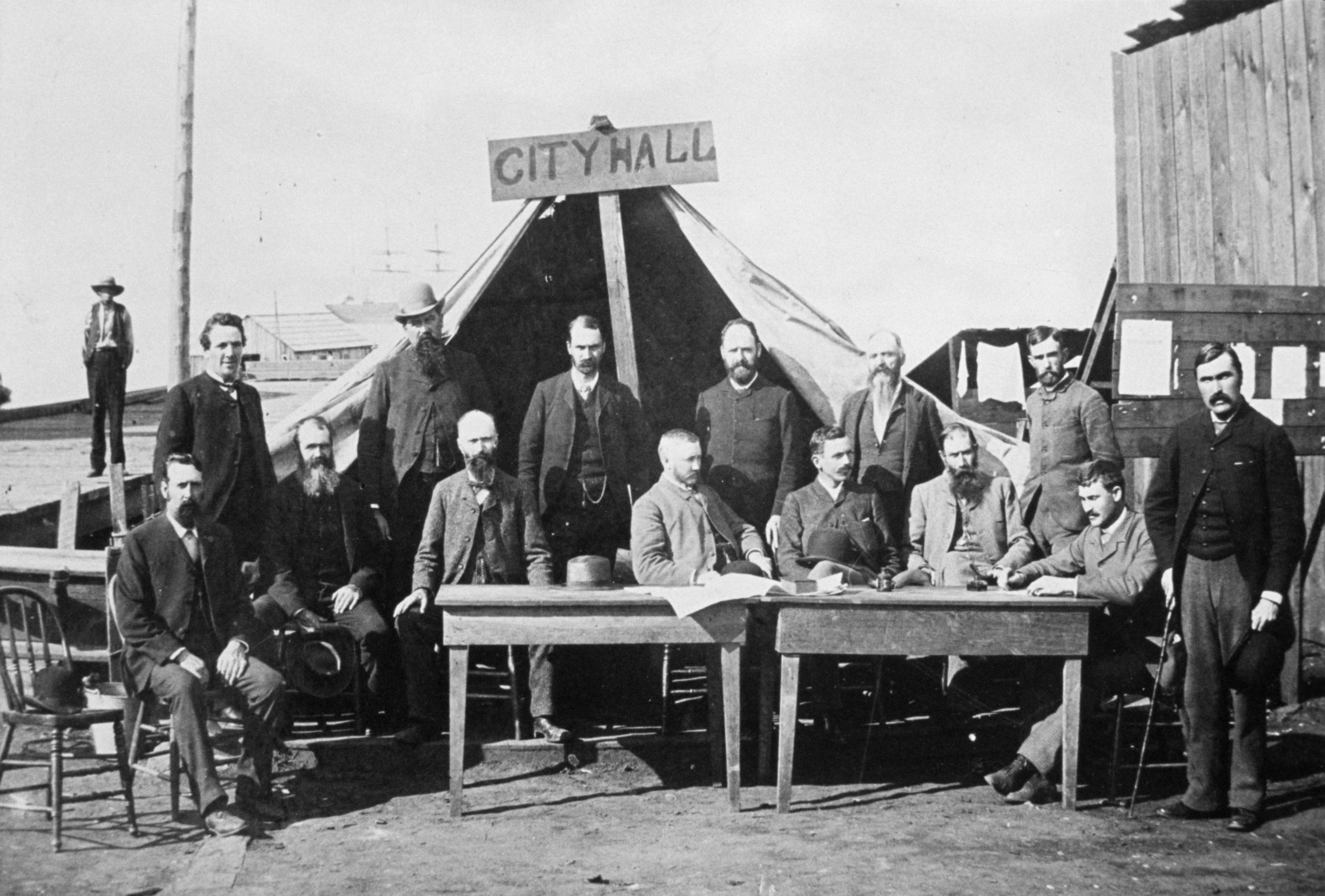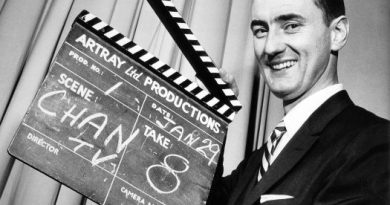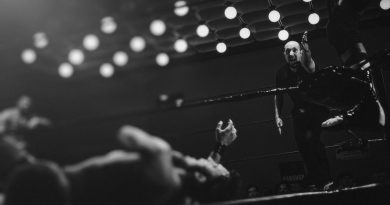Charles Kingsford-Smith
Why is an elementary school in Vancouver named for the Australian aviator Charles Kingsford-Smith, the first man to fly across the Pacific Ocean, and the first to fly across both the Pacific and the Atlantic’
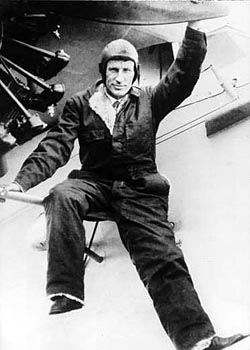
The answer: he and his family once lived in Vancouver.
His father, William, who had been a bank manager in Melbourne, ran an import-export business at 167 Cordova, dealing with Australia. William and his brother also dabbled in accounting, real estate and auctioneering. The brothers had arrived in 1903, eight-year-old Charles and his mother and the rest of the children in 1905, but they all returned to Australia in 1911.
In an obituary in November, 1935, in the Province, Charles’ brief stay here was mentioned: “Of Charlie . . . they recall that he was ‘just an ordinary kid.’ He was not conspicuous in the big family of five boys and two girls. Just as they wandered over the Pacific from Australia to settle in Vancouver and then sailed back to their homeland some eight years later, the family did not settle long in any part of Vancouver. Their friends remember that they lived on Seventh Avenue West, Alberni, Comox and Pendrell Streets.”
Young Charlie’s school days were spent in Lord Roberts and Dawson public schools.
“He had scarcely concluded his schooling in Vancouver,” the obituary continued, “when he went off to war. At 20, he was an army aviator and was shot down by the Germans. After the war, he took up commercial flying. Nothing much was heard of him until 1928 when he astounded the world by commanding the famous plane Southern Cross when it flew across the Pacific from Oakland, California to Australia.”
![The crew of the Southern Cross, from left, Harry Lyon, Captain Charles Kingsford-Smith, Charles T.P. Ulm and James Warner
[Photo: Hargrave: The Pioneers]](https://vancouverhistory.ca/wp-content/uploads/2021/01/Smithy_Autographed.jpg)
[Photo: Hargrave: The Pioneers]
Kingsford-Smith had two others with him in the crew on that epic flight. Public interest in flight at the time was feverish: Lindbergh’s solo Atlantic flight had been in May, 1927. A year later, Kingsford-Smith became the first to fly across the Pacific. He likely would have been more famous today if he had been alone!
His career from 1928 on was brilliant (he would be knighted in 1932), but destined to be tragically brief. He opened a number of airmail routes across the oceans and carried mail to Australia’s northern settlements.
He was back in the news again on June 25, 1930. On that day he and his crew had landed the Southern Cross (referred to in the story as a “famous old patched-up plane”) at Harbor Grace, Newfoundland just before 6 o’clock in the morning local time after a 31-hour flight from Ireland across the Atlantic. The plane’s compass had gone wonky, and the crew was unable to hear radio signals so spent five hours flying in circles over Newfoundland before they found a landing field.
Kingsford-Smith was now the first to have flown across both of the world’s major oceans. He later was the first to fly the Indian Ocean.
It was on a mail flight in November 1935 that he went down somewhere in or near “the shark-infested Bay of Bengal.” He’d been flying from Allahabad, India to Singapore, an over-water distance of 1,360 miles (2,188 km). A young friend of Charlie’s, another Australian flyer named James Melrose, was flying near him and reported that “flames were shooting out the exhaust of the Southern Cross, flying only 200 feet above the water.” Melrose fought a “terrific battle” against storms before he arrived at Singapore.
![The Southern Cross takes off from Oakland, California, May 31, 1928
[Image: Hargrave: The Pioneers]](https://vancouverhistory.ca/wp-content/uploads/2021/01/cks_departure_350.jpg)
[Image: Hargrave: The Pioneers]
Stories of Kingsford-Smith’s disappearance dominated local newspapers in early November, 1935. It was not until May of 1936, however, that he was declared legally dead. Hope had been held out for months. His body and his plane have never been found.
In June of 1959 a portrait of Kingsford-Smith by Australian artist William Dargie was presented to the school named for him at 6901 Elliott. In remarks at the time to the 600 children present, city archivist Major J.S. Matthews recalled: “The Kingsford-Smith children went to school in Vancouver. They also climbed mountains. Charles and his two sisters used to climb Grouse Mountain, but that was before there was road or a ski-lift to the top. A start from home had to be made about five o’clock in the morning, and by climbing hard and fast the party might reach the top in seven hours. The boy, afterward Sir Charles, climbed all the North Shore mountains.”
It was Matthews who named the school. The school board had asked him to suggest some names, and of the half-dozen he put forward, they liked “Kingsford-Smith” best.

